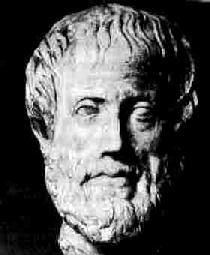I have now seen more support for this theory in the form of a reversal of doctrine regarding the underlying premise for the role of lactic acid in mitochondrial function. We apparantly are still building that model folks.
please reference this thread too:
http://www.imminst.o...ST&f=44&t=10559Vol. 96, Issue 3, 1129-1134, February 2, 1999
http://www.pnas.org/...tract/96/3/1129
Role of mitochondrial lactate dehydrogenase and lactate oxidation in the intracellular lactate shuttle
George A. Brooks*, Hervé Dubouchaud, Marcia Brown, James P. Sicurello, and C. Eric Butz
Exercise Physiology Laboratory, Department of Integrative Biology, University of California, Berkeley, CA 94720-3140
Communicated by Howard A. Bern, University of California, Berkeley, CA, December 4, 1998 (received for review August 26, 1998)
To evaluate the potential role of mitochondrial lactate dehydrogenase (LDH) in tissue lactate clearance and oxidation in vivo, isolated rat liver, cardiac, and skeletal muscle mitochondria were incubated with lactate, pyruvate, glutamate, and succinate. As well, -cyano-4-hydroxycinnamate (CINN), a known monocarboxylate transport inhibitor, and oxamate, a known LDH inhibitor were used. Mitochondria readily oxidized pyruvate and lactate, with similar state 3 and 4 respiratory rates, respiratory control (state 3/state 4), and ADP/O ratios. With lactate or pyruvate as substrates, -cyano-4-hydroxycinnamate blocked the respiratory response to added ADP, but the block was bypassed by addition of glutamate (complex I-linked) and succinate (complex II-linked) substrates. Oxamate increased pyruvate (10-40%), but blocked lactate oxidation. Gel electrophoresis and electron microscopy indicated LDH isoenzyme distribution patterns to display tissue specificity, but the LDH isoenzyme patterns in isolated mitochondria were distinct from those in surrounding cell compartments. In heart, LDH-1 (H4) was concentrated in mitochondria whereas LDH-5 (M4) was present in both mitochondria and surrounding cytosol and organelles. LDH-5 predominated in liver but was more abundant in mitochondria than elsewhere. Because lactate exceeds cytosolic pyruvate concentration by an order of magnitude, we conclude that lactate is the predominant monocarboxylate oxidized by mitochondria in vivo. Mammalian liver and striated muscle mitochondria can oxidize exogenous lactate because of an internal LDH pool that facilitates lactate oxidation.
Intra- and extra-cellular lactate shuttles.
http://www.ms-se.com/pt/re/msse/abstract.0...#33;8091!-1
Medicine & Science in Sports & Exercise. 32(4):790-799, April 2000.
BROOKS, GEORGE A.
Abstract:
BROOKS, G. A. Intra- and extra-cellular lactate shuttles. Med. Sci. Sports Exerc., Vol. 32, No. 4, pp. 790-799, 2000. The "lactate shuttle hypothesis" holds that lactate plays a key role in the distribution of carbohydrate potential energy that occurs among various tissue and cellular compartments such as between: cytosol and mitochondria, muscle and blood, blood and muscle, active and inactive muscles, white and red muscles, blood and heart, arterial blood and liver, liver and other tissues such as exercising muscle, intestine and portal blood, portal blood and liver, zones of the liver, and skin and blood. Studies on resting and exercising humans indicate that most lactate (75-80%) is disposed of through oxidation, with much of the remainder converted to glucose and glycogen. Lactate transport across cellular membranes occurs by means of facilitated exchange along pH and concentration gradients involving a family of lactate transport proteins, now called monocarboxylate transporters (MCTs). Current evidence is that muscle and other cell membrane lactate transporters are abundant with characteristics of high Km and Vmax. There appears to be long-term plasticity in the number of cell membrane transporters, but short-term regulation by allosteric modulation or phosphorylation is not known. In addition to cell membranes, mitochondria also contain monocarboxylate transporters (mMCT) and lactic dehydrogenase (mLDH). Therefore, mitochondrial monocarboxylate uptake and oxidation, rather than translocation of transporters to the cell surfaces, probably regulate lactate flux in vivo. Accordingly, the "lactate shuttle" hypothesis has been modified to include a new, intracellular component involving cytosolic to mitochondrial exchange. The intracellular lactate shuttle emphasizes the role of mitochondrial redox in the oxidation and disposal of lactate during exercise and other conditions.
http://intl-jap.phys...tract/92/4/1573
J Appl Physiol 92: 1573-1584, 2002. First published January 18, 2002; doi:10.1152/japplphysiol.01069.2001
8750-7587/02 Vol. 92, Issue 4, 1573-1584, April 2002
Changes in MCT 1, MCT 4, and LDH expression are tissue specific in rats after long-term hypobaric hypoxia
Grant B. McClelland and George A. Brooks
Exercise Physiology Laboratory, Department of Integrative Biology, University of California, Berkeley, California 94720
Little is known about the effect of chronic hypobaric hypoxia on the enzymes and transporters involved in lactate metabolism. We looked at the protein expression of monocarboxylate transporters MCT 1, MCT 2, and MCT 4, along with total lactate dehydrogenase (LDH) and LDH isozymes in skeletal muscle, cardiac muscle, and liver. Expression of these components of the lactate shuttle affects the ability to transport and oxidize lactate. We hypothesized that the expression of MCTs and LDH would increase after acclimation to high altitude (HA). The response to acclimation to HA was, however, tissue specific. In addition, the response was different in whole muscle (Mu) and mitochondria-enriched (Mi) fractions. Heart, soleus, and plantaris muscles showed the greatest response to HA. Acclimation resulted in a 34% increase in MCT 4 in heart and a decrease in MCT 1 (47%) and MCT 4 (47%) in plantaris Mu. In Mi fractions, the heart had an increase (,40%) and soleus a decrease (40%) in LDH. HA also had a significant effect on the LDH isozyme composition of both the Mu and Mi fractions. Mitochondrial density was decreased in both the soleus (17%) and plantaris (44%) as a result of chronic hypoxia. We conclude that chronic hypoxia had a tissue-specific effect on MCTs and LDH (that form the lactate shuttle) but did not produce a consistent increase in these components in all tissues.
http://ajpendo.physi...act/290/6/E1237
Am J Physiol Endocrinol Metab 290: E1237-E1244, 2006. First published January 24, 2006; doi:10.1152/ajpendo.00594.2005 0193-1849/06
Colocalization of MCT1, CD147, and LDH in mitochondrial inner membrane of L6 muscle cells: evidence of a mitochondrial lactate oxidation complex Takeshi Hashimoto, Rajaa Hussien, and George A. Brooks
Department of Integrative Biology, University of California, Berkeley, California
Submitted 30 November 2005 ; accepted in final form 18 January 2006
Results of previous studies suggested a role of mitochondria in intracellular and cell-cell lactate shuttles. Therefore, by using a rat-derived L6 skeletal muscle cell line and confocal laser-scanning microscopy (CLSM), we examined the cellular locations of mitochondria, lactate dehydrogenase (LDH), the lactate-pyruvate transporter MCT1, and CD147, a purported chaperone protein for MCT1. CLSM showed that LDH, MCT1, and CD147 are colocalized with the mitochondrial reticulum. Western blots showed that cytochrome oxidase (COX), NADH dehydrogenase, LDH, MCT1, and CD147 are abundant in mitochondrial fractions of L6 cells. Interactions among COX, MCT1, and CD147 in mitochondria were confirmed by immunoblotting after immunoprecipitation. These findings support the presence of a mitochondrial lactate oxidation complex associated with the COX end of the electron transport chain that might explain the oxidative catabolism of lactate and, hence, mechanism of the intracellular lactate shuttle.
Lactate and glucose interactions during rest and exercise in men: effect of exogenous lactate infusion

















































